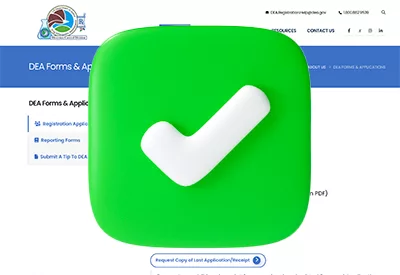Learn how your patient’s life story can unlock psychotherapeutic avenues of treatment on our interview with Margaret Chisolm.
Publication Date: 02/03/2025
Duration: 16 minutes, 41 seconds
Transcript:
KELLIE NEWSOME: Every patient has a story, and making sense of it is part of the healing. Welcome to the Carlat Psychiatry Podcast, keeping psychiatry honest since 2003.
CHRIS AIKEN: I’m Chris Aiken, the editor-in-chief of The Carlat Psychiatry Report.
KELLIE NEWSOME: And I’m Kellie Newsome, a psychiatric NP and a dedicated reader of every issue. Today we pick up with Margaret Chisolm on how to assess behavioral addictions, how to talk to patients about their temperament, and how to appreciate the meanings they’ve made of their life story.
MARGARET CHISOLM: The life story perspective is all about the meaning somebody gives to events. So, asking about how somebody is dealing with this event, how they understand this event, how they explain it. You know, if they've had a tragic loss of a family member, are they feeling guilty about it, like they did something wrong; it’s their fault? Do they have a religious story that they’re telling themselves? That God is angry at them or punishing them; those sorts of things. It all eventually comes out, if not at the first interview, over time as people share more and more of their stories.
CHRIS AIKEN: So, the life story naturally includes psychosocial external stressors along the timeline of your life, right?
MARGARET CHISOLM: Exactly, each of these perspectives has a conceptual triad. I’ve alluded to a couple of the other ones, but the life story triad is setting, sequence, and outcome. So, it’s just like any narrative. I often use the example of Star Wars, right? It’s a long time ago in a galaxy far, far away, right? So, everybody has these events that occur in a particular setting in a particular sequence, and the outcome really is the story that they tell themselves about the events. Somebody might have an infant die of SIDS, and then the story they tell themselves could be that it was their fault; they weren’t attentive enough, or they were co-sleeping with the baby or whatnot and one of the goals of helping someone whose problem is best understood from the life story perspective is helping them rescript their story collaboratively. “You know, well, maybe there are other ways of looking at this. Could this be a random act of tragedy? How are you gonna make meaning of this in terms of why it happened?”
CHRIS AIKEN: So, the events are fundamental, but the meaning is the really critical part in the life story?
MARGARET CHISOLM: Right. The life story perspective is all about meaning; meaningful explanations, which may not be causal. Sometimes, people come with severe depression and give meaningful explanations as to why they’re depressed: “Oh, I’m depressed because you know my wife left me.” Well, maybe, but maybe your wife left you because you were depressed, right? Sometimes they sound good, but they’re not really causal, so you have to take those with a grain of salt obviously, especially if somebody might be having a syndrome of depression.
CHRIS AIKEN: So, thinking from the perspective of again a 30-minute practitioner who is trying to help people, are there exercises or assignments you find particularly useful in helping to shake up the story and getting people to rewrite their story?
MARGARET CHISOLM: Things that I do, are try to be very tentative, about any interpretation that I am offering and to be very collaborative. I try to remain neutral. But I think it’s like any skilled psychotherapist; if it sounds like it could be, perhaps, maybe usually, conditional language, I think is key there and remaining neutral. I don’t like to impose. You have a lot of power as a psychotherapist/psychiatrist, and I really don’t like to impose a story on someone. I like to be collaborative about it because so many people will agree with a story you tell them that you suggest, and it may not be really helpful.
CHRIS AIKEN: Okay. I was thinking more if you’re seeing them every couple of weeks if there are helpful things you might advise them to do, not to tell them what the meaning is but to help them discover the meaning on their own – outside assignments. Like I saw in your book, you had them write down their story, or it sounds like this is a place where the arts or creative work might come to aid.
MARGARET CHISOLM: Oh, certainly. I mean, I think for many patients writing in a journal, reflecting on what happened to them, if it’s a life story event, and the meaning they're making of it is immensely helpful. So, I don’t typically assign homework assignments. I typically do most of the work in the session, but that’s just me, but I do think certainly reflecting on that, and I like to have people, if they are gonna reflect, to do some writing on that, and they can certainly bring it to the next visit. But typically, because I’m not there as a therapist for the people reading the book, I have developed these exercises, but I typically don’t use much homework assignments with my patients, mainly because they don’t do them so.
CHRIS AIKEN: They don’t do them! Okay. So that’s a great point. And you want it to be a success; you don’t want to […]
MARGARET CHISOLM: No, they don’t need another failure.
CHRIS AIKEN: Yeah, okay. And you implied that the behavioral piece is self-evident in the interview, but I’m not so sure. I’m thinking when I ask them, “Do you have habits that are hard to break?” Like what are some questions you would go to get at that part?
MARGARET CHISOLM: Well, for eating disorders, for instance, I might ask you know, what do they imagine the ideal weight would be for them, and depending on their height, if they say whatever, 100 pounds, it might be a concern, so asking questions about that. Obviously, asking all the substance abuse questions: How they drink; you know when they drink; what role drinking plays in their life, for instance. Another motivated behavior is obviously, there are sexual behaviors that we ask about. What the objects of their sex fantasies are. What their sex drive is like – those kinds of things. If they use pornography, what type of pornography they use? And another motivated behavior is self-harm. Sometimes, people, as we know, can be conditioned into harming themselves, with cutting anxiety relief, or suicide attempts because of the attention that people get with the attempt and coming to the hospital and all that. So, people can develop habits that aren’t really necessarily best explained by a disease or a broken part but because of conditioned learning.
CHRIS AIKEN: Oh, I think I’m picturing it more clearly now. Rather than a blank, open-ended question, it sounds like you are going to assess for self-harm: eating behaviors, sexual behaviors, are there others you would put on that list that you would assess for at every intake?
MARGARET CHISOLM: Yeah, so I mean, I divide the behaviors into innate and acquired drives. So, the innate drives are the things that we all do to either perpetuate our own life or the life of the species, so that’s eating, sex, sleeping – so I’ll ask about sleep as well.
CHRIS AIKEN: So, you’re saying a lot of sleep disorders, not all certainly, but a lot of them would be behavioral?
MARGARET CHISOLM: I do want to know what people do when they wake up at night and whether or not they are staying in bed wide awake, which we know from CBT-I isn’t helpful. We should only use the bed for sleeping and sex; otherwise, if you are awake in the night, move to another place because otherwise you come to associate the bed with being wide awake.
CHRIS AIKEN: So, it sounds like you are going to assess for problems in sleep and do a fairly rich behavioral history around those problems.
MARGARET CHISOLM: Exactly, and then there are the acquired drives, which have hijacked our innate drives’ neurocircuitry. There is not an innate drive to use heroin, but we can be reinforced through these circuits, especially if we have particularly either environmental or hereditary differences. So, asking about drugs, asking about eating, probably, alcohol, those are the biggest areas, self-harm. Usually, the acquired drive of suicide attempts is very obvious in taking the history, so it does not have to be separate questions.
CHRIS AIKEN: Are you starting to have to deal increasingly with digital addictions?
MARGARET CHISOLM: Yeah, that’s a really interesting question, Chris. Obviously, this is a controversial field as to what is an addiction and what isn’t an addiction. But I do think if you think about choice, drive, and conditioned learning, a lot of video games and social media is designed to be highly reinforcing. So, there’s huge positive reinforces that come with anticipating that next life; there’s intermittent reinforcement it’s the most positive kind of reinforcing schedule. Did I get a like? And so, there is that element of conditioned learning. And then that increases our drive, and then that narrows our choice to resist. And so, if you think about it from a behavior perspective, it certainly is plausible that video game addiction or social media addictions could be viewed as a behavioral syndrome.
CHRIS AIKEN: During quarantine, more patients have become bothered by this addiction.
MARGARET CHISOLM: Yeah, that’s an interesting point. Patients sometimes volunteer that. I haven’t usually, routinely asked, unless obviously, that’s part of the chief complaint, and somebody is leaving their spouse because they are spending all day on Facebook.
CHRIS AIKEN: Interesting. One thing that we struggle with as psychiatrists is that patients often have the view that all of their problems are meant to be treated with medications. Obviously, sleep meds are a great example. Do you find that this perspective is helping you shift out of that pigeonhole with patients and to redirect them in other directions?
MARGARET CHISOLM: Definitely. I think it expands. I mean, it’s an education process with patients, just like it’s an education process with clinicians to start thinking of these illnesses more broadly or these problems more broadly. And so, I think it does help patients to understand why a pill might not solve this problem because if I have a discussion about how I understand this problem is really arising more from something they’ve encountered and the story that they’re telling themselves about that, how they are dealing with that isn’t going to be helped by a pill. A pill isn’t gonna make that go away. The great thing about the dimensional perspective is that, unlike the use of categorical personality disorders, it’s not name-calling, right? We’re looking at somebody’s strengths, and we’re saying, “You’re somebody with two more scoops of feeling than the average person. That doesn’t mean that that’s a bad thing. That’s who you are, and that’s great for certain situations. The conceptual triad for the dimensional perspective is potential, provocation, and response. So, your potential, which means your affective temperament, is to have two scoops of feeling. That my word for high-end neuroticism, which is really great because that’s gonna make you more sensitive: artists, performers – they can really tap into that emotion and that high feeling state – the strongly felt emotions, which is great; works for you great in those situations, not so good in some other situations. So, you’re not gonna be able to change who you are as a person. This is part of your personality, but you are gonna be able to change how you respond to that feeling, how you think, and how you act. So, we’re gonna celebrate who you are. I’m gonna try to guide you through life’s provocations, and together, develop other ways of thinking and acting in response to those unavoidable provocations like waiting in a bank line (I don’t know if people do that anymore), but waiting in line, driving in traffic, pretty much unavoidable and evokes strong feelings often. So, we’re not gonna be able to avoid certain things, but there may be some provocations we can avoid, and so kind of figuring that out together.” And so, I think it’s just much more affirming of someone rather than labeling them as having a personality disorder, showing them that there’s a continuum the spectrum of affective temperament from somebody who doesn’t feel anything at all to somebody who feels things really strongly. They’re here, and that works great in some circumstances, doesn’t work so great in other circumstances, so people usually respond really well to that kind of frame, and that’s not gonna be helped with a pill.
CHRIS AIKEN: I see. And you gave these really wonderful, specific questions that brought out temperamental features like neuroticism that I really like that cause I can see those are things that happen in those people’s lives a lot do you also have questions that bring out the strengths of some of those temperaments?
MARGARET CHISOLM: Yeah, so I’ll say, “Are you somebody who is, if you notice some problem that you have like something looks different on your skin or you have a bump that could be serious, are you somebody that goes to seek some professional opinion about that?” because the downside of if your feelings are too weak; if you feel your emotions are too weak you might ignore certain very serious situations because you’re not worried about them. You know, ah, whatever, it will all work out. These are the people who come to treatment literally with, you know, grapefruit-size tumors. I once saw a woman when I was an intern who had a huge tumor growing out of her head, which she has covered in a scarf. Like, who goes that long without seeking treatment? Well, someone who doesn’t worry very much. So, I like to frame it in a neutral way, every one of these dimensions, so that people can see that it’s good in certain situation, it’s not so good in other situations.
KELLIE NEWSOME: Let’s pause for a preview of the CME quiz for this episode. Earn CME for each episode through the link in the show notes.
1. In Dr. Chisolm’s approach, what is the most important aspect of the life story perspective?
A. The meaning it holds for the patient
B. The relationship of life events to new episodes
C. The social determinants of health it reveals
D. The life story can reveal clues a personality disorder
Margaret Chisolm is a professor of psychiatry at Johns Hopkins University. She has authored over 150 scientific papers and two books that explore the perspectives of psychiatry, one for professionals, Systematic Psychiatric Evaluation, and one for patients, From Survive to Thrive: Living Your Best Life with Mental Illness. Did you know that the FDA recently reclassified ECT devices and updated their indication? Read all about it in the February issue of The Carlat Report, where Vaughn McCall compares ECT to ketamine and TMS, and Steven Hamilton looks at how long you can safely keep esketamine going. Subscribe online and get $30 off with the promo code PODCAST. Yeah, you have to subscribe for this content because we won’t accept any industry funding.


_-The-Breakthrough-Antipsychotic-That-Could-Change-Everything.webp?t=1729528747)



